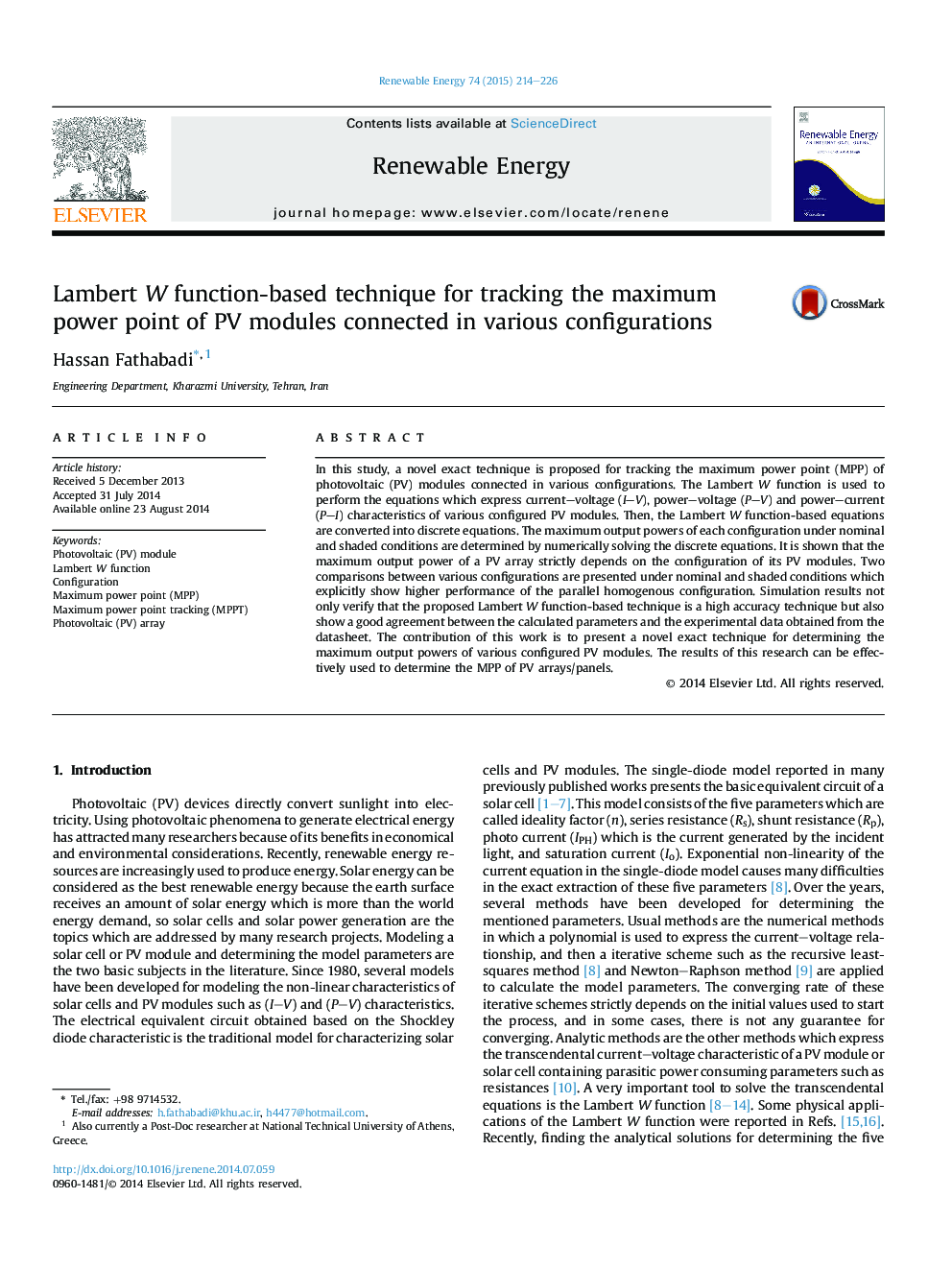| Article ID | Journal | Published Year | Pages | File Type |
|---|---|---|---|---|
| 299970 | Renewable Energy | 2015 | 13 Pages |
•Novel MPPT technique for PV modules connected in various configurations.•Novel and exact analysis for the maximum output power of various configurations.•Calculating and arranging the configuration efficiency (CE%) of each configuration.•Inserting shading effects in the obtained Lambert W function-based discrete equations.•Calculating the maximum output powers under partially shaded conditions.
In this study, a novel exact technique is proposed for tracking the maximum power point (MPP) of photovoltaic (PV) modules connected in various configurations. The Lambert W function is used to perform the equations which express current–voltage (I–V), power–voltage (P–V) and power–current (P–I) characteristics of various configured PV modules. Then, the Lambert W function-based equations are converted into discrete equations. The maximum output powers of each configuration under nominal and shaded conditions are determined by numerically solving the discrete equations. It is shown that the maximum output power of a PV array strictly depends on the configuration of its PV modules. Two comparisons between various configurations are presented under nominal and shaded conditions which explicitly show higher performance of the parallel homogenous configuration. Simulation results not only verify that the proposed Lambert W function-based technique is a high accuracy technique but also show a good agreement between the calculated parameters and the experimental data obtained from the datasheet. The contribution of this work is to present a novel exact technique for determining the maximum output powers of various configured PV modules. The results of this research can be effectively used to determine the MPP of PV arrays/panels.
